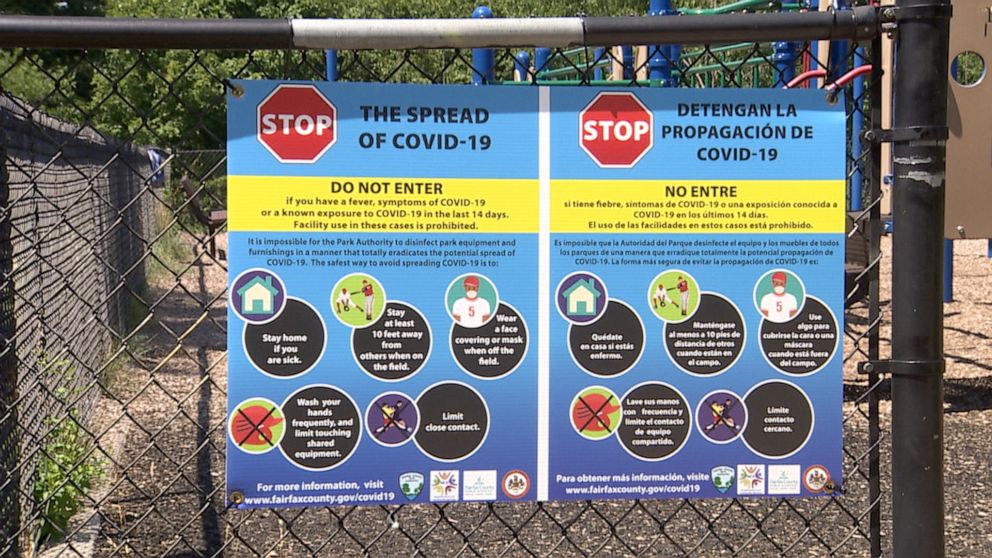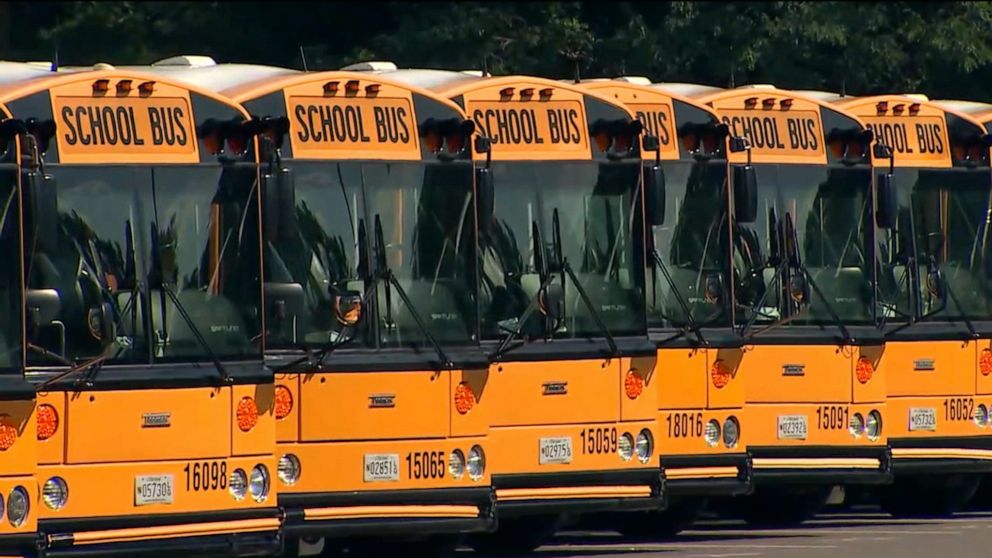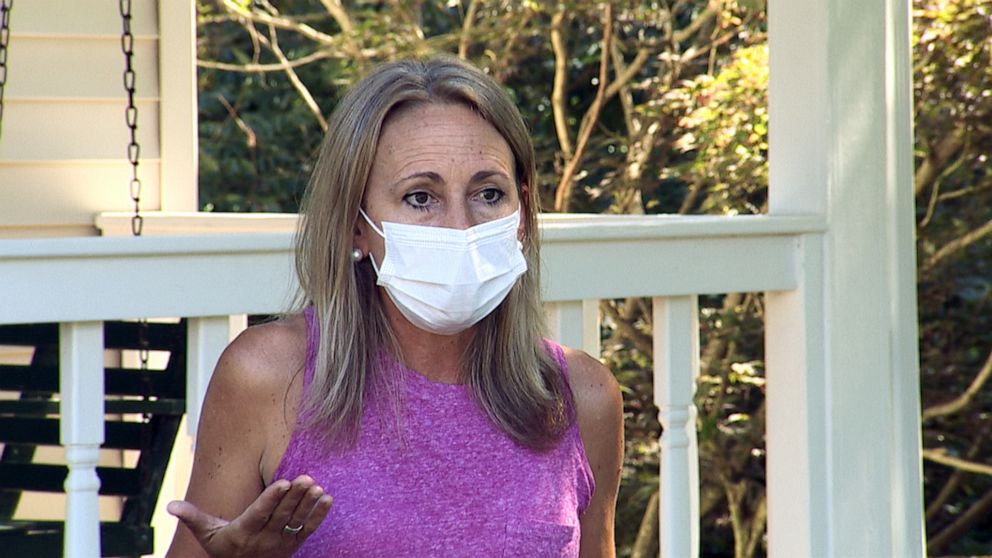Parents, teachers look anxiously ahead to school
"I'm not sure that I want my children to be the guinea pigs for that."
This is the time of year when Americans start thinking about back to school -- new supplies, new clothes, new teachers. But with the number cases of coronavirus in the U.S. surging, parents and teachers have a whole set of new concerns to contend with as well.
The coronavirus pandemic is forcing state and local officials to consider drastic plans for the upcoming school year including mandatory mask-wearing and limited extracurricular activities, no chorus or sports.
"I'm not sure that I want my children to be the guinea pigs for that," Lorey Johnson, a parent from South Carolina, told ABC News.
Plans also include reducing class size to allow social distancing and using a "hybrid model" -- dividing classes so groups of students rotate between in-school learning and at-home distance learning.

But that may not work everywhere.
School districts in Los Angeles, San Diego, San Francisco and Houston have announced they will all begin the school year online.
"We had a feeling that it was coming, but and no one's super pleased about it, but I do think it's the right thing to do. The numbers are just not on our side right now," said Anna Liza Bella, a parent in Los Angeles.
The American Academy of Pediatrics says kids should be physically in class, pointing to the major health, social and educational benefits. But four months into the coronavirus pandemic, it’s not clear what could happen when kids return. Doctors and public health officials are worried about how kids may transmit coronavirus.
"Maybe they have less severe outcomes, but when it comes to transmission, kids are important vectors because they'll infect their parents ... and infect their grandparents," said Dr John Brownstein Ph.D., an ABC News contributor, chief innovation officer for the Boston Children's Hospital and professor of epidemiology at Harvard Medical School.
Peg Alessi, a teacher from Northern Virginia for 25 years, has been grappling with what the right approach is for her and her students.
"I think best would be starting virtually," Alessi said.
But Alessi says she will likely start the school year using the hybrid model with 12 students in her fourth-grade classroom. She worries about what they could be bringing into school.
"My biggest concern about going back to school and sending them back to school for our family is health. It's cut and dry for us. Our youngest with special needs, Nate, is a high risk," said Holly Birnbach, a parent from Texas.
President Trump insists schools should be fully reopened in the fall. He’s accused Democrats of playing politics when they say it’s unsafe to send kids back while the virus is spreading.
"The president has said unmistakably that he wants schools to open. And I was just in the Oval talking to him about that. And when he says open, he means open in full, kids being able to attend each and every day at their school. The science should not stand in the way of this," White House Press Secretary Kayleigh McEnany said Thursday. "The science is on our side here."
Additional guidelines from the U.S. Centers for Disease Control and Prevention (CDC) on schools reopening won't be released until the end of July, a spokesman confirmed to ABC News.
The delay on the guidelines now bumps up against August, when many students were supposed to return.
Trump has said the existing guidance for schools, which mandated things like masks and six feet of distance among students, is too tough and expensive to implement.
CDC Director Robert Redfield told "Good Morning America" the new guidance would consist of five additional reference documents to help guide parents and teachers.

Some, like Jeff Bowlby, a teacher in the Philadelphia suburbs, are anxious to get back to school.
"I want to be back in the classroom. I want this," said Bowlby. "And I want the students to wear masks. And I want to wear masks. And I want to be as safe as we can in the classroom setting."
But many parents say they feel that in the rush to reopen, officials are not focusing on their needs and concerns.
"There is a disconnect between those in charge making the decisions and then those of us with kids who are living in the real world," said Johnson.
In Arizona last month, Kimberly Byrd was teaching online summer school in the same classroom as two other teachers. All three got COVID-19 and Byrd died.
"Opening up is not feasible," said Angela Skillings, who taught with Byrd and also tested positive. "It’s not safe for children, it’s not safe for our staff members, it’s not safe for the people in the community."
Another issue that educators say is not getting enough attention is what happens if a teacher or student tests positive. Bowlby said his wife is also a teacher and they have three young children.
"We're going to be sending my son into a classroom of 20 kids, my daughter in a classroom with 20 kids. My wife's going to teach 20 kids and I'm going to have a hundred cycling through my classroom. So, I mean, we're going to have a high amount of exposure," Bowlby said.
"If my son's being quarantined, are they going to then make my daughter quarantine or my wife and I going to have to be out of school for two weeks?" Bowlby asked.
Alessi says parents whose kids do go back to school need to be prepared for a new normal: more independent work in the classroom and less interaction with teachers and peers.
"I know a lot of people are saying the social emotional piece is why we're sending our students to school. But schools are going to look or sound or feel anything of what it was pre-COVID," Alessi said.

Public health experts say there is no one-size-fits-all solution for the entire country.
"Opening schools up in some of the hot spots right now would be virtually impossible because adding the mixing of kids would just flare up the epidemic," said Dr Brownstein.
And that could lead to another round of closures, something many parents say could really harm their children after so much disruption and upheaval already this year.
Nancy Rocha, a parent in Texas, says that is her biggest worry: schools reopening and then quickly closing.
"I have to make sure that my son has consistency and stability when it comes to going back to school because there are struggles that he has in academics," Rocha said.
Trump has threatened to pull federal funding from schools that don’t open, a move that could require congressional approval. But decisions about if and how to reopen schools are made at the local level and even within states, districts could take very different approaches.
That has teachers and parents raising alarms about disparities in education and support structures.
"My biggest concern is that if we can't figure out the systems for what we need to do to be able to address this COVID crisis in education, that we're just going to settle for it not working great. Settle for only some students getting an education," said Brian Randall, a teacher in North Carolina.
"I also think there should be counselors and people who are sort of just checking in, social workers who can check in with families just so we know for sure that some of these kids are -- are not in abusive situations and are able to get out if they need to or can get moved if they need to into another environment," said Anna Liza Bella, a parent in Los Angeles.
With many school districts set to open in August, the clock is ticking for creative, safe solutions.
"Right now, I definitely don't feel comfortable with them going back full time. But I do know that that is going to have a lasting effect on them," said Johnson.
Parents say they need to prepare their children for this unusual semester -- and that may mean some disappointed kids if their schools don't reopen for in-person learning.
"My daughter starts kindergarten. She's been wearing her book bags since it arrived last week," said Bowlby.




